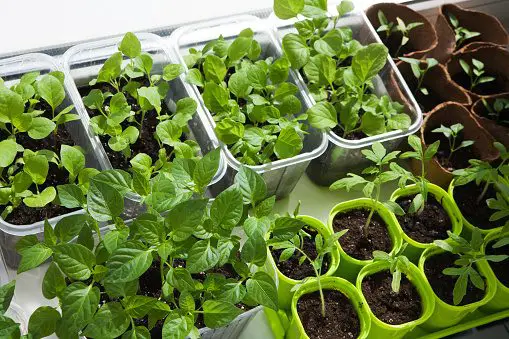Last Updated on April 12, 2024 by Real Men Sow
I’m a little late to the party this year, but I’m finally getting round to planning my plot. I’ve been out with the tape measure, double-checking the size of my space before stealing Lewis’s coloured pencils to draw up my 2015 masterpiece.
Indoor Vegetable Gardening In Small Area
I love plot planning, especially now I have a smaller kitchen garden rather than my big double rod allotment plot. Using a smaller space takes a bit of thinking, but is a really rewarding challenge – especially come high summer and your little growing area is not only beautiful but far more productive you ever thought possible.
I’m now in my third year of garden growing. Here are my 5 favourite tips for maximising your veg growing yields in a small space.
Start your Indoor Vegetable Gardening in your Apartment
Grow Vegetables in Containers
Using containers to grow vegetables has proven popular over the last few years, especially for people without a garden or allotment. Some growers, such as Mark from Vertical Veg, have done incredible things on balconies and in back yards.
Grow Vegetables In Containers
I’ve had success with plenty of veg in containers, including peas, salad leaves, and chard. In fact, I think some crops are even better suited to containers. Carrots and parsnips grow well in florist buckets as you can control the soil, avoiding the irritating stumpy roots that you get if you have very stony soil.
Containers dry out quickly though, so make sure you keep on top of the watering.
Grow Upwards
Since I began growing in my back garden, I’ve made much better use of structures, such as wigwams. I used to grow my peas and mangetout in rows until I discovered high climbing varieties.
Some of these will grow to 6ft, making them perfect for wigwams. The beauty of wigwams is heavy crops in just a few square feet.
Which Veggies Should Your Grow Indoors?
One of my favourite GYO beginner tips is to grow what you like to eat. If you’re limited in space, don’t waste it with veg that we don’t eat much of. It’s a pretty obvious concept when you think about it, but there are still times that this passes me by. Use your space wisely and grow what you love. Six good harvests of things you enjoy or can store are better than a dozen crops you only half like.
Fastest Seeds for Indoor Vegetable Gardening
Intercropping is the idea of sowing a quick growing crop in with a slow-growing one. Whilst the slow grower plods on, you get a bonus harvest from the space. Typically, this is a Summer salady vegetable in alongside a leafy Winter plant, such as radishes sown amongst Brussel sprouts. I’ve also grown lettuce with my PSB, and dwarf French beans underneath sweetcorn (as suggested by Douglas of Sweet Pea Salads).
How To Sow Vegetables Indoors?
In a small area, it’s important to make the most of any available space. Plan to have seedlings ready to be planted out once you’ve pulled out a finished crop.
For example, get some French bean seedlings ready to go straight in after the broad beans finish, or pak choi to follow the first beetroot harvest.

